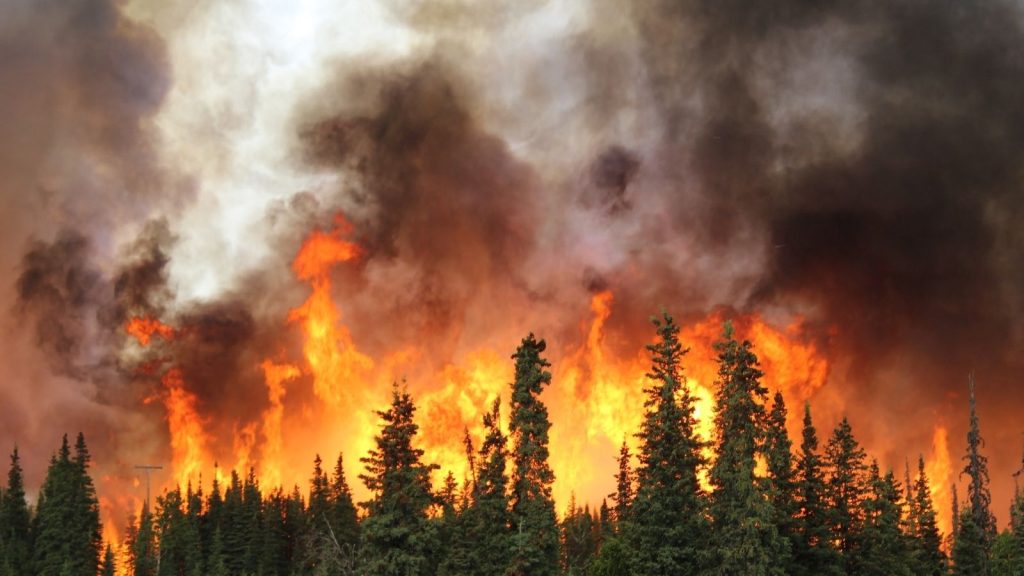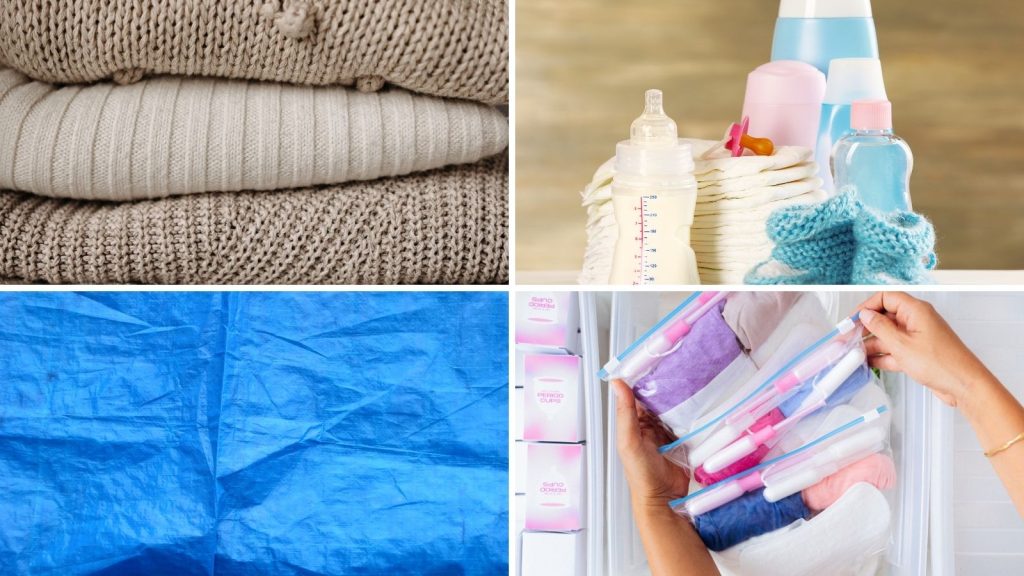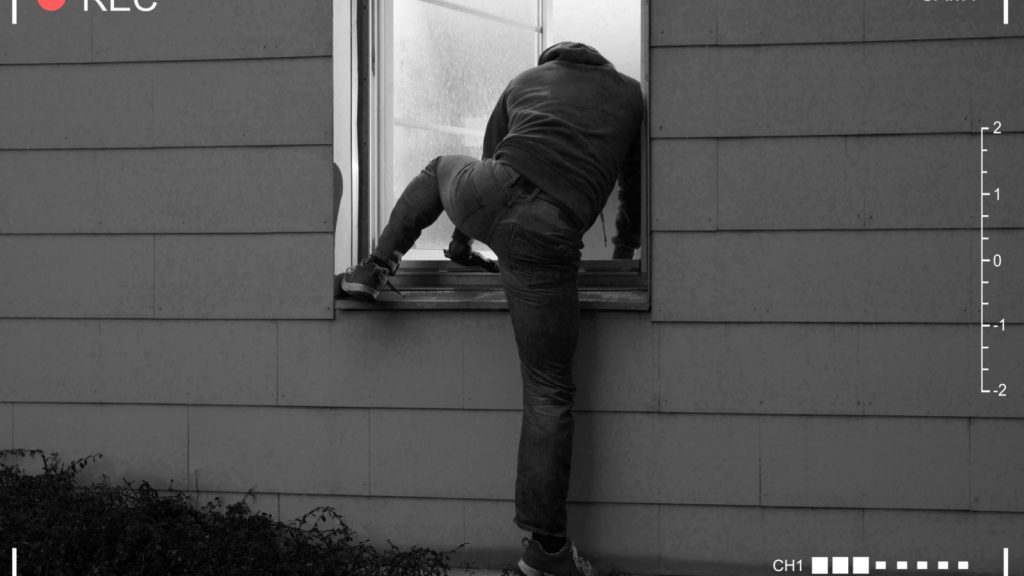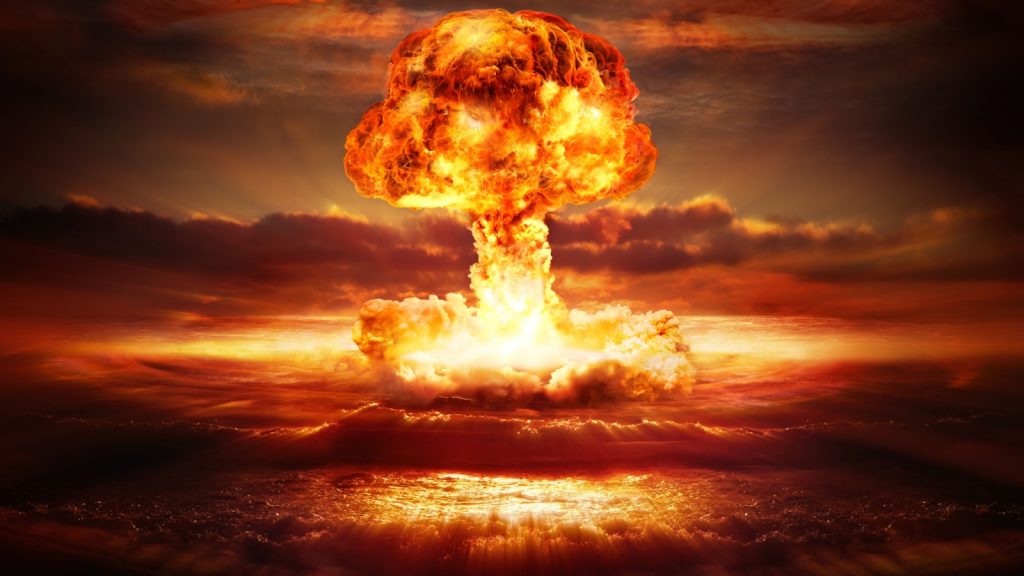When disaster strikes in the United States, the Federal Emergency Management Agency (FEMA) mobilizes to deliver emergency supplies to those in need. These supplies cover basic necessities like water, food, and shelter materials. FEMA refers to these life-sustaining items as “commodities” – essentials necessary for survival and safety.
What exactly are the supplies FEMA distributes most frequently, and should you have the same items stored at home? This article examines FEMA’s most commonly provided disaster relief supplies and offers practical advice for self-reliant individuals.
Even when FEMA responds, aid might take time to reach you. Roads could be blocked or the affected area could be extensive. During major crises, you might need to be self-sufficient for days or weeks before assistance arrives. After a devastating hurricane in Puerto Rico, water and food shipments were severely delayed – on average about 2 months before reaching many survivors. This extreme example demonstrates why having your own emergency supplies is crucial.

Essential Supplies FEMA Provides in Any Disaster
FEMA focuses on delivering basics that people need to survive and remain healthy after a disaster. Certain supplies are consistently distributed, regardless of whether the emergency is a hurricane, flood, wildfire, or earthquake.
Water
Clean drinking water is always the highest priority. FEMA typically sends massive quantities of bottled water into disaster zones when taps are unsafe or non-functional. FEMA considers water one of the most critical “life-sustaining commodities.”
After major hurricanes, FEMA has shipped tens of millions of liters of water to affected communities. Each person requires approximately one gallon of water daily for drinking and basic sanitation, so FEMA aims to provide at least that amount. Water is heavy and bulky, making it one of the most challenging items to deliver quickly.
Food (Meals)
Alongside water, FEMA delivers prepared meals or rations. These are often ready-to-eat meals that don’t require cooking (similar to military MREs). FEMA maintains “emergency meals” in its warehouses and has distributed millions of meals after significant disasters.
In one recent hurricane response, FEMA shipped over 13.2 million meals to survivors. The goal is to provide each person with sufficient daily calories when grocery stores and kitchens are unavailable. The meals might be heater meals, canned food, or ration packs that can be consumed cold.
Tarps and Plastic Sheeting
To assist people with damaged homes, FEMA commonly provides tarps (large waterproof sheets) and heavy-duty plastic sheeting. These are used as temporary roof patches or to cover broken windows and holes in walls.
After hurricanes and tornadoes, blue tarps covering roofs are a common sight – many of these come from FEMA. For instance, FEMA and the U.S. Army Corps of Engineers operate the “Blue Roof” program to install reinforced plastic sheeting on damaged roofs. FEMA also distributes blue tarps for homeowners to install themselves as immediate rain protection.
Blankets and Bedding
When people are displaced or in emergency shelters, staying warm is vital – especially at night or in cold weather. FEMA maintains large stocks of blankets, including basic cotton blankets and special cold-weather blankets, for distribution after disasters.
Along with blankets, FEMA often provides cots (portable folding beds) for use in shelters. Thousands of cots and blankets have been delivered by FEMA in responses to events like Hurricanes Isaac and Sandy. These help survivors sleep more comfortably when they cannot be in their own beds.
Hygiene and Sanitation Kits
Maintaining basic hygiene is challenging when water and power are unavailable. FEMA, along with the Red Cross and other agencies, distributes personal hygiene kits (sometimes called comfort kits).
A typical hygiene kit contains items like soap, toothbrush and toothpaste, shampoo, deodorant, hand sanitizer, moist towelettes, toilet paper, and feminine hygiene products. These kits help people stay clean and prevent illness in the stressful aftermath of a disaster.
FEMA’s warehouses include thousands of “comfort/hygiene kits” ready for distribution. For example, kits were given to wildfire evacuees and hurricane survivors staying in community shelters.
Infant and Baby Supplies
Disasters affect everyone, including babies and young children. FEMA makes it a priority to supply infant and toddler necessities in disaster zones. This can include baby formula, baby food, bottles, and substantial quantities of diapers and wipes.
FEMA keeps diapers in its inventory of emergency goods. They also have prepared infant/toddler kits that may contain formula, bottles, and other baby care items. During large responses, FEMA has delivered these kits to help families with little ones.
Basic Medical Supplies and Equipment
Another common category of FEMA relief supply is medical support items. This ranges from simple first aid supplies to equipment for people with disabilities or health conditions.
FEMA stocks first aid kits and consumable medical supplies (like bandages, gloves, and medicines) to replace what might be lost. They also have durable medical equipment (DME) like wheelchairs, walkers, or crutches as part of special kits.
In one report, FEMA and its partners delivered durable medical equipment and consumable medical supplies to survivors of disasters like Hurricane Sandy. They even have kits for people with disabilities to use in shelters.
Generators and Fuel
In many disasters, power outages are a significant problem. FEMA often supplies portable generators to areas without electricity. These generators can power emergency shelters, hospitals, and sometimes individual homes (especially for people who need power for medical devices).
After major hurricanes, FEMA has shipped hundreds of generators into the impacted region. Along with generators, FEMA may help provide fuel (like gasoline or diesel) to keep critical systems running.
However, generators are heavy and limited in number – FEMA typically prioritizes hospitals, shelters, water treatment plants, and other vital facilities for generator use. They also work with the U.S. Army Corps of Engineers to install large generators for temporary power.
Special Supplies for Specific Disasters
Certain disasters create unique needs. While FEMA’s basic relief package (food, water, shelter, etc.) applies almost everywhere, sometimes they must provide specialized supplies for the situation.
Hurricanes and Tornadoes
High-wind disasters like hurricanes and tornados often cause widespread structural damage. In these events, tarps and roof sheeting become especially high-demand to cover countless damaged roofs quickly.
After a major hurricane, FEMA and Army engineers have provided reinforced plastic roofing for tens of thousands of homes (the “Blue Roof” program) and distributed self-help tarps for others. Hurricanes also tend to knock out power over large areas, so the need for generators and fuel increases dramatically.
Chainsaws and debris removal tools are another necessity after wind storms (though these might be supplied by local teams or volunteer groups rather than FEMA directly).
Floods
In flood disasters, clean water and sanitation become major concerns because local water supplies might be contaminated. While water is always a priority, floods reinforce the need for water purification supplies.
FEMA might distribute water purification tablets or bleach for cleaning water, in addition to bottled water. Also, floods bring a lot of mud and damage to homes, so clean-up kits are often handed out.
These kits can include buckets, mops, bleach, trash bags, and gloves to help residents start cleaning their homes. Another item specific to flooding is sandbags – before a flood, local authorities (with FEMA’s support) may supply sandbags to help homeowners protect property.
Pumps (to remove water from buildings) and generators to run them are critical too.
Wildfires

Wildfires can destroy homes and also create dangerous smoke. After a wildfire, FEMA’s role might include providing masks (like N95 respirator masks) to residents returning to smoky areas so they can breathe safely.
Another need is sifting tools and gloves – people may be given kits to help them sift through ashes for belongings. FEMA and partners may also set up air-conditioned shelters or provide air purifiers to protect people from smoke inhalation.
One unique aspect is that wildfires often require evacuating with little notice, so emergency supply kits (go-bags) are crucial.
Earthquakes
Earthquakes strike without warning and can collapse buildings. This leads to immediate needs for temporary shelter. After major quakes, FEMA has been known to provide tents and shelter kits when many homes are unsafe.
FEMA even had stock of “earthquake supply kits” and tens of thousands of tents stored for such events. Earthquake survivors also need the standard food, water, and blankets, but they may rely more on camping-style gear if many people are sleeping outdoors.
Another special consideration is search and rescue equipment (for responders) and medical aid for injuries, but these are handled by specialized teams rather than general supplies for the public.
Winter Storms and Extreme Cold
Disasters like blizzards or ice storms often leave people without heat or power in freezing temperatures. In these cases, FEMA provides things to help people stay warm. Blankets are crucial (thermal blankets or even sleeping bags).
Sometimes FEMA sets up “warming centers” and supplies portable heaters or fuel for heating. They may also distribute cold-weather gear if needed (coats, gloves, etc., often through partner agencies).
After an ice storm, generators again become important to restore power. If heavy snow causes building collapses or blocked roads, FEMA might supply shovels or coordinate snow-clearing equipment (though this is usually a local/state task).
Pandemics and Biological Disasters
While less common, events like disease outbreaks require special supplies. During the COVID-19 pandemic (which was a nationwide disaster), FEMA coordinated huge shipments of personal protective equipment (PPE) – masks, gloves, gowns, face shields – to hospitals and communities.
Similarly, for a chemical spill or radiation release, authorities might distribute things like iodine tablets (for nuclear incidents) or respirator masks and gloves to the public.
Comparing FEMA Supplies vs. Prepper Stockpiles
Interestingly, the emergency supplies FEMA delivers are very similar to the supplies that preparedness experts recommend individuals stockpile. The big difference is scale and timing: FEMA brings these items to an entire community after a disaster, whereas a prepper stores them beforehand for personal use.
Water and Food
Both FEMA and preppers put water and nonperishable food at the top of their priority lists. FEMA delivers bottled water and pre-packaged meals to survivors, and they advise everyone to have at least a three-day supply of water and food for themselves at home.
Serious preppers often aim for much more (two weeks, a month, or even longer supplies). The types of food might differ – FEMA might give ready-to-eat meals or military-style rations, while a homesteader might store home-canned goods, rice, beans, and MREs.
Shelter and Warmth
FEMA provides tarps, plastic sheets, tents, cots, and blankets to ensure people have shelter and a place to sleep. Preppers likewise usually own camping gear or emergency shelter items.
Many have tents, heavy-duty tarps, and sleeping bags in their supplies. They might also have tools and materials to make repairs (hammer, nails, duct tape, plastic sheeting) so they can secure their homes post-disaster without waiting for a tarp delivery.
Lights and Power
FEMA’s aid often includes generators for critical needs and occasionally flashlights or batteries from partners. Prepared individuals typically have their own flashlights, battery lanterns, and maybe a small generator or solar charger.
FEMA isn’t likely to give each household a generator, so many preppers invest in one themselves to keep lights and appliances running. FEMA encourages having battery-powered radios and flashlights with extra batteries in your personal emergency kit.
First Aid and Medicines
FEMA brings basic first aid supplies and helps replace prescription medications or medical equipment that are lost in a disaster (through programs or kits). Preppers, on the other hand, usually maintain their own well-stocked first aid kits and a reserve of important medications.
A homesteader might have a kit with bandages, antiseptics, pain relievers, and more – similar to what disaster medical teams carry. If someone in the family has a medical device or daily medicine, preppers try to have backups because they know FEMA may not reach them immediately.
Hygiene and Sanitation
FEMA’s hygiene kits (soap, toothpaste, etc.) help people stay clean. Preppers likewise store personal hygiene items in their emergency supplies.
They’ll have things like toilet paper, sanitary wipes, trash bags (for garbage or makeshift toilets), and bleach for disinfection. A homesteader might even have a portable toilet or a plan for waste if plumbing is down.
Infant and Pet Needs
FEMA doesn’t forget babies or pets – they stock infant formula, diapers, and even pet carriers and pet food in some cases. Preppers with infants will definitely stock formula (if needed), baby food, diapers, and so on, because those are survival items for a baby.
Pet owners who are preparedness-minded will keep extra pet food, leashes, and maybe a crate ready for evacuation. FEMA recommends including pets in your emergency plan and having pet supplies ready to go.
How to Stock and Store These Supplies for Long-Term Resilience
Water Storage
Store plenty of water, since it’s the #1 survival need. FEMA suggests at least a three-day supply, with one gallon of water per person per day as a rule of thumb. For a family of four, that’s a minimum of 12 gallons for 3 days.
If you have space, try to store even more – two weeks’ worth if possible – especially in remote or disaster-prone areas. Use clean, food-grade containers or buy bottled water. Keep water in a cool, dark place and check it periodically.
Water doesn’t spoil, but if you filled containers yourself (like from the tap), the recommendation is to replace the water every six months to keep it fresh. Write the date on containers to track this. Commercially bottled water that stays sealed can be stored for much longer (up to a couple of years in ideal conditions).
It’s also smart to have water purification methods on hand: unscented bleach, water purification tablets, or a filtration device. These can make questionable water safe if your stored supply runs low.
Food Storage
Just like FEMA packs warehouses with ready-to-eat meals, you should have an ample store of foods that won’t spoil and don’t require cooking (or can be eaten cold if necessary). Aim for at least a 3-day supply of food for everyone in your household, though many preppers extend this to a few weeks or months.
Good choices include canned foods (soups, vegetables, canned meat or tuna, beans, fruit) and dry goods (rice, pasta, cereal, peanut butter, protein bars). Make sure to include a manual can opener in your kit if you stock cans!
Store food in a cool, dry place and protect it from pests. Most canned goods last a year or more; dry goods vary but often many months if sealed. Rotate your stock by using and replacing the food so nothing expires.
Don’t forget any special dietary needs in your family – include baby food or formula (and a way to prepare it without power, like pre-mixed formula) for infants, and easy-to-chew items for elderly family members if needed.
Emergency Cooking and Eating Supplies
Plan how you would heat food if the power is out. You might store a simple camp stove or portable gas grill, along with fuel (propane canisters, for example). Even a charcoal grill is useful (with stored charcoal) – just use it outdoors for safety.
Also keep matches or lighters in waterproof packaging. Disposable plates, cups, and utensils can be handy if water is scarce for washing dishes. If you have a fireplace or wood stove, keep some firewood accessible.
And remember, if fuel or cooking isn’t available, stick to the non-cook foods. It’s wise to include some ready-to-eat items like energy bars or MREs in case you can’t cook at all.
Shelter and Clothing Supplies
Have at least a few heavy-duty tarps and/or sheets of plastic in your home. These can be purchased inexpensively from hardware stores and can save your property from further damage (for example, covering a broken roof or window).
Also keep duct tape, nails, rope, or bungee cords – anything that will help secure a tarp in place. For warmth, store extra blankets or sleeping bags with your emergency gear. If you live in a cold region, make sure these are winter-grade.
It’s also a good idea to set aside a change of clothes for each person, including sturdy shoes and a jacket. Disasters are often dirty; you might get wet or muddy, so dry clothes are important. Sturdy footwear is critical if there is debris (nails, glass) around.
Rain gear or ponchos can help if you’re exposed to the weather. Store all clothing items in plastic bags to keep them dry and free from bugs.
Light and Communication Tools
Keep multiple flashlights and extra batteries in your kit. LED flashlights last long on batteries; lanterns can light up a room. Consider hand-crank flashlights or lanterns that charge via solar/crank, so you aren’t as reliant on batteries.
Similarly, have a battery-powered or hand-crank radio to listen to news and emergency updates. This is something FEMA strongly recommends for everyone, because information is key during a disaster. A NOAA Weather Radio can alert you to incoming hazards too.
If you can afford a backup power source, options include a small gas generator, a solar panel with battery station, or even a car inverter (which allows you to use your car to charge devices). Even a small power bank (USB battery pack) charged beforehand can keep your phone alive to call for help or check updates.
Hygiene and Sanitation Kit
Build your own hygiene kit just like the ones FEMA hands out. Include basics for personal care: soap, toothpaste and toothbrushes for each family member, deodorant, hand sanitizer, and toilet paper.
Don’t forget a supply of moist towelettes or baby wipes, which are extremely useful if you can’t shower. Have garbage bags and plastic ties to contain waste – you might need to fashion an emergency toilet with a bucket, liner, and some absorbent material if plumbing is down.
If you have infants, stock diapers, wipes, and diaper rash cream in larger-than-usual quantities. For women, include an extra pack or two of feminine hygiene products.
Keep everything in a waterproof container (like a lidded plastic bin) to ensure it stays dry and uncontaminated. Good sanitation helps prevent the spread of illness, which can easily occur in post-disaster conditions.
First Aid and Medication Storage
Put together a solid first aid kit if you haven’t already. This should have bandages (various sizes), gauze, adhesive tape, antibiotic ointment, antiseptic wipes, pain relievers (ibuprofen, acetaminophen), any necessary personal medications, tweezers (for splinters or ticks), scissors, and gloves.
If you or a family member rely on prescription medicine, talk to your doctor about keeping an emergency supply (even just a few days extra) on hand. Keep medicines in their original containers if possible, and note expiration dates. Rotate them out with new prescriptions so they stay effective.
For life-sustaining equipment like an insulin pump or oxygen concentrator, have a backup plan – perhaps a spare battery or manual alternative (like small oxygen tanks) and ensure you have power backup (generator or inverter) if needed.
Important Documents
Keep copies of your important documents (IDs, insurance policies, medical info) in a waterproof pouch. While papers aren’t food or water, they are part of being resilient.
Additionally, think about cash – ATMs and card readers might not work in a disaster, so have some cash in small bills stored safely in your kit. Other handy items to stock: a whistle (to signal for help if you’re trapped), a wrench or pliers (to turn off utilities like gas), and local maps in case GPS is down.
Conclusion: Be Prepared, Not Scared
FEMA’s most commonly provided disaster supplies – water, food, tarps, blankets, hygiene items, and more – paint a clear picture of what every household needs to weather a crisis. These are universal needs for human survival and comfort.
Should you stock these supplies? Absolutely yes. If an emergency happens, having your own cache of FEMA-like supplies will mean you can take care of yourself and your family immediately, without having to wait for relief trucks to arrive or for a shelter to be set up.
FEMA does incredible work helping millions of people, but they also encourage personal preparedness because they know they can’t reach everyone right away. Your goal isn’t to stockpile because you expect the worst, but because it’s a wise insurance policy.
If more individuals are prepared, FEMA and first responders can focus their limited resources on the most vulnerable and on critical infrastructure. As a homesteader or prepper, you might even become a helper in your community – sharing an extra tarp with a neighbor or providing a charged battery to someone’s phone.
In the end, disasters will continue to happen – whether it’s a storm, fire, flood, or something else. We can’t control them, but we can control how we prepare and respond. Stocking the supplies that FEMA finds most important is a smart, responsible step.
Store your supplies well, rotate them, and hope you never have to use them. But if you do, you’ll be extremely grateful that you planned ahead.
References
- As Biden-Harris Administration Continues Search and Rescue, Response and Recovery Efforts Across Southeast, Federal Aid for Survivors Surpasses $110 Million – FEMA Press Release
- FEMA Mismanaged the Commodity Distribution Process in Response to Hurricanes Irma and Maria – DHS OIG Report
- Emergency Management: FEMA Collaborates Effectively with Logistics Partners but Could Strengthen Implementation of Its Capabilities Assessment Tool – GAO Report
- FEMA’s Sourcing for Disaster Response Goods and Services – DHS OIG Report
- Meals and Water Top List of Unified Efforts Toward Recovery in Puerto Rico – FEMA Press Release
- Water (Emergency Supply Guidance) – Ready.gov (FEMA)
- Food and Water in an Emergency – FEMA/American Red Cross (Emergency Preparedness Guide, FEMA 477/August 2004)
- Ready Emergency Supply List (Checklist) – FEMA Ready Campaign
- FEMA Publishes Annual Preparedness Survey: Trends Show Americans Becoming Better Prepared – FEMA Press Release
James is a former logistics coordinator and wilderness safety instructor, whose practical experience taught him the value of sensible preparedness and calm resilience. Passionate about self-reliance, James teaches everyday skills—like water purification, emergency communication, and outdoor safety—to help people confidently handle life's disruptions without fear or overwhelm. His approachable style combines real-world insights with relatable, personal stories and experiences.



